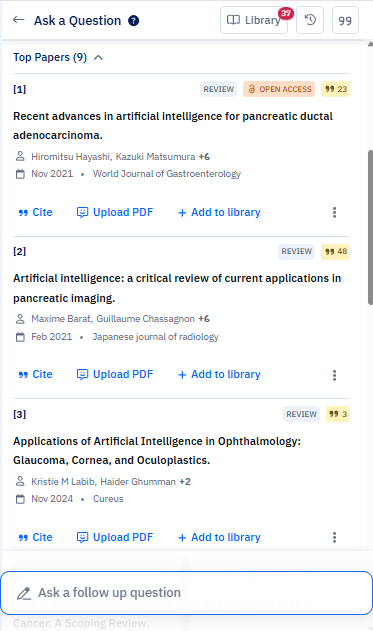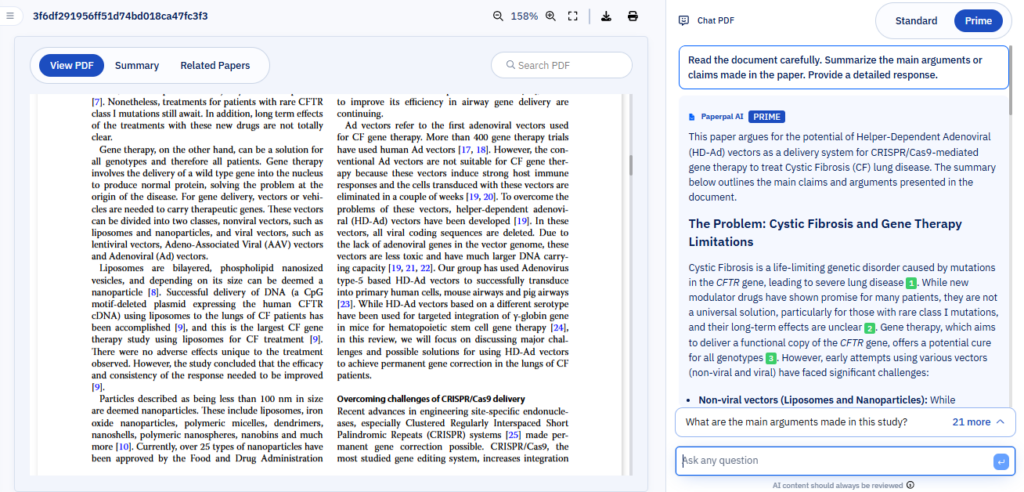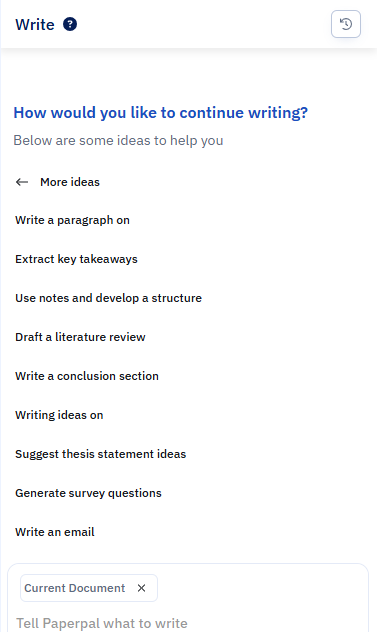Table of Contents
A literature review is a critical analysis and synthesis of existing research on a particular topic. It provides an overview of the current state of knowledge, identifies gaps, and highlights key findings in the literature.[1] The purpose of a literature review is to situate your own research within the context of existing scholarship, demonstrating your understanding of the topic and showing how your work contributes to the ongoing conversation in the field.
Learning how to write a literature review is a critical tool for successful research. Your ability to summarize and synthesize prior research pertaining to a certain topic demonstrates your grasp on the topic of study, and assists in the learning process. If you’re new to this, understanding the literature review meaning helps set the stage for your research journey.
What is a Literature Review?
A well-conducted literature review in research demonstrates the researcher’s familiarity with the existing literature, establishes the context for their own research, and contributes to scholarly conversations on the topic. It’s essential for answering the question: what is literature review in research and why is it a fundamental step in the academic writing process. One of the purposes of a literature review is also to help researchers avoid duplicating previous work and ensure that their research is informed by and builds upon the existing body of knowledge.
Write a Literature Review 2x Faster With Paperpal
What is the Purpose of Literature Review?
A literature review in research serves several important purposes within academic and research contexts. Here are some key objectives and functions of a review of literature in research:²
- Contextualizing the Research Problem: The literature review provides a background and context for the research problem under investigation. It helps to situate the study within the existing body of knowledge.
- Identifying Gaps in Knowledge: By identifying gaps, contradictions, or areas requiring further research, the researcher can shape the research question and justify the significance of the study. This is crucial for ensuring that the new research contributes something novel to the field
- Understanding Theoretical and Conceptual Frameworks: Review of literature in research helps researchers gain an understanding of the theoretical and conceptual frameworks used in previous studies. This aids in the development of a theoretical framework for the current research.
- Providing Methodological Insights: Another purpose of literature reviews is that it allows researchers to learn about the methodologies employed in previous studies. This can help in choosing appropriate research methods for the current study and avoiding pitfalls that others may have encountered.
- Establishing Credibility: A well-conducted literature review demonstrates the researcher’s familiarity with existing scholarship, establishing their credibility and expertise in the field. It also helps in building a solid foundation for the new research.
- Informing Hypotheses or Research Questions: The literature review guides the formulation of hypotheses or research questions by highlighting relevant findings and areas of uncertainty in existing literature.

How to Write a Good Literature Review with Paperpal?
Writing a literature review involves systematically analyzing and synthesizing existing research on a particular topic. While the process can be time-consuming, Paperpal’s AI-powered features can help you conduct research faster, organize your findings more effectively, and write with greater clarity. Here’s a phase-by-phase guide on how to leverage Paperpal throughout your literature review process.
Step 1: Define Your Topic and Search Strategy
The topic and search strategy for your literature review should entail a clearly defined research question and objective. Define the scope by adding the timeframe, geographical focus, and inclusion/exclusion criteria and systematic search strategy using relevant keywords and databases.
Start by using Paperpal Research to rapidly understand your topic’s landscape. Ask questions like “What is the current state of research on [your topic]?” to get a comprehensive overview backed by real peer-reviewed sources. This helps you quickly identify:
- Key themes and concepts in your field
- Recent developments and trends
- Potential gaps in the literature

Follow up in the same conversation thread to refine your scope: “Which papers focus on [specific region or methodology]?” or “What are the most cited studies from the last 5 years?” Research remembers your entire conversation, so you can explore different angles without losing your broader research trail.
As you discover relevant papers, add them directly to your Citation Library with one click. This creates an organized repository of all your references that you can access throughout your writing process. Research delivers papers with DOIs ready to use, making citation management seamless.
Step 2: Review and Analyze Your Literature
Evaluate the strengths and weaknesses of each study. Discuss the methodologies used, the quality of evidence, and the overall contribution of each work to the understanding of the topic. Synthesize the information from different studies to highlight trends, patterns, or areas of consensus in the literature.
Use Chat PDF to rapidly extract insights from your collected papers. Upload a research paper and Paperpal automatically generates a summary highlighting critical points. Ask specific questions like:
- “What methodology did this study use?”
- “What are the key limitations mentioned?”
- “How does this study’s findings compare to [another paper]?”

For comparative analysis, upload up to 3 papers at once and ask: “What are the common themes across these studies?” or “Where do these researchers disagree on [specific topic]?” Chat PDF maintains conversation context, so you can dig deeper without re-uploading or repeating questions.
Create a literature matrix by asking Chat PDF to extract specific data points: “What sample sizes, methodologies, and key findings are reported in these papers?” Use these insights to identify patterns and gaps systematically.
Step 3: Start Your First Draft
Use Paperpal Write to draft your introduction. Upload your research notes, literature summaries, or key papers you’ve collected (up to 3 files simultaneously). Toggle on “Current Document” if you’ve already started an outline, then prompt Write with:
“Based on my notes and the attached papers, draft an introduction for my literature review on [topic] that establishes the research gap and outlines the scope.”

Continue in the same conversation to draft body sections. Analyze studies on specific themes, compare methodological approaches, or synthesize findings across multiple sources. Write remembers the context of your conversation so you can seamlessly move from introduction to thematic analysis to conclusion without losing context.
Step 4: Personalize the Draft With Your Insights
Personalize AI-written content with your own insights and voice to create a polished, comprehensive literature review that maintains academic rigor while reflecting your unique perspective on the research. Use Paperpal Rewrite to refine your draft further, paraphrase informal language to sound more academic, trim lengthy sentences for clarity, or adjust tones to match your audience’s expectations.
Step 5: Polish Grammatical Errors
Use Paperpal Edit and manuscript checks to fix all grammatical errors, technical language and finalize your draft before submission.
How to Structure Your Literature Review?
Writing a literature review involves summarizing and synthesizing existing research on a particular topic. A good literature review format should include the following elements.
Introduction: The introduction sets the stage for your literature review, providing context and introducing the main focus of your review.
- Opening Statement: Begin with a general statement about the broader topic and its significance in the field.
- Scope and Purpose: Clearly define the scope of your literature review. Explain the specific research question or objective you aim to address.
- Organizational Framework: Briefly outline the structure of your literature review, indicating how you will categorize and discuss the existing research.
- Significance of the Study: Highlight why your literature review is important and how it contributes to the understanding of the chosen topic.
- Thesis Statement: Conclude the introduction with a concise thesis statement that outlines the main argument or perspective you will develop in the body of the literature review.
Body: The body of the literature review is where you provide a comprehensive analysis of existing literature, grouping studies based on themes, methodologies, or other relevant criteria.
- Organize by Theme or Concept: Group studies that share common themes, concepts, or methodologies. Discuss each theme or concept in detail, summarizing key findings and identifying gaps or areas of disagreement.
- Critical Analysis: Evaluate the strengths and weaknesses of each study. Discuss the methodologies used, the quality of evidence, and the overall contribution of each work to the understanding of the topic.
- Synthesis of Findings: Synthesize the information from different studies to highlight trends, patterns, or areas of consensus in the literature.
- Identification of Gaps: Discuss any gaps or limitations in the existing research and explain how your review contributes to filling these gaps.
- Transition between Sections: Provide smooth transitions between different themes or concepts to maintain the flow of your literature review.
Conclusion: The conclusion of your literature review should summarize the main findings, highlight the contributions of the review, and suggest avenues for future research.
- Summary of Key Findings: Recap the main findings from the literature and restate how they contribute to your research question or objective.
- Contributions to the Field: Discuss the overall contribution of your literature review to the existing knowledge in the field.
- Implications and Applications: Explore the practical implications of the findings and suggest how they might impact future research or practice.
- Recommendations for Future Research: Identify areas that require further investigation and propose potential directions for future research in the field.
- Final Thoughts: Conclude with a final reflection on the importance of your literature review and its relevance to the broader academic community.
Frequently Asked Questions
Focus on peer-reviewed journal articles, academic books, and reputable publishers. Evaluate each source for authority, accuracy, currency, and relevance to your research question. Avoid non-scholarly sites unless they offer essential context or primary data.
Citation management tools like Zotero, Mendeley, and EndNote can help you organize references and generate bibliographies. For a more integrated approach, Paperpal’s Cite lets you add papers discovered through AI research directly to your collection with one click. As you write, use Cite Text to select any claim and get relevant citation suggestions from academic literature, or generate citations in your required format (APA, MLA, Chicago) without switching tools, keeping your entire workflow in one place from research to final formatting.
A systematic review follows a strict, transparent protocol defining specific inclusion criteria and systematically searching all relevant studies. A narrative review is more flexible and thematic, offering a broad overview without strict selection rules. Other types, like scoping or meta-analysis, differ in scope and analytical depth scoping maps for broad topics, while meta-analyses use statistical methods to combine study results.
Start by grouping studies with similar themes or findings. Summarize key points, compare differing perspectives, and highlight patterns or contradictions. Use your own words to connect insights across sources, showing how they relate to each other and to your research focus.
Paperpal’s Chat PDF lets you upload up to 3 research papers simultaneously and ask comparative questions like “What are the common themes across these studies?” or “Where do these researchers disagree?” Paperpal also maintains conversation context, so you can dig deeper into specific findings without re-uploading files. You can also extract key data points to create literature matrices, making it easier to identify trends and synthesize insights systematically across your sources.
Use academic databases like PubMed, Web of Science, JSTOR, and ERIC, depending on your field. Tools like Google Scholar and library catalogs are also helpful.
Paperpal Research accelerates this process by giving you to 250+ million research papers across all disciplines. Ask any research question and get comprehensive answers backed by real peer-reviewed sources in seconds. Follow up in the same conversation thread to explore specific angles, compare methodologies, or narrow your focus, finding relevant research papers that match your intent without switching between multiple databases.
References
- Denney, A. S., & Tewksbury, R. (2013). How to write a literature review. Journal of criminal justice education, 24(2), 218-234.
- Pan, M. L. (2016). Preparing literature reviews: Qualitative and quantitative approaches. Taylor & Francis.
- Cantero, C. (2019). How to write a literature review. San José State University Writing Center.
Paperpal is a comprehensive AI writing toolkit that helps students and researchers achieve 2x the writing in half the time. It leverages 23+ years of STM experience and insights from millions of research articles to provide in-depth academic writing, language editing, and submission readiness support to help you write better, faster.
Get accurate academic translations, rewriting support, grammar checks, vocabulary suggestions, and generative AI assistance that delivers human precision at machine speed. Try for free or upgrade to Paperpal Prime starting at US$25 a month to access premium features, including consistency, plagiarism, and 30+ submission readiness checks to help you succeed.
Experience the future of academic writing – Sign up to Paperpal and start writing for free!



